Linking functional and molecular mechanisms of host resilience to malaria infection
- PMID: 34636723
- PMCID: PMC8510579
- DOI: 10.7554/eLife.65846
Linking functional and molecular mechanisms of host resilience to malaria infection
Abstract
It remains challenging to understand why some hosts suffer severe illnesses, while others are unscathed by the same infection. We fitted a mathematical model to longitudinal measurements of parasite and red blood cell density in murine hosts from diverse genetic backgrounds to identify aspects of within-host interactions that explain variation in host resilience and survival during acute malaria infection. Among eight mouse strains that collectively span 90% of the common genetic diversity of laboratory mice, we found that high host mortality was associated with either weak parasite clearance, or a strong, yet imprecise response that inadvertently removes uninfected cells in excess. Subsequent cross-sectional cytokine assays revealed that the two distinct functional mechanisms of poor survival were underpinned by low expression of either pro- or anti-inflammatory cytokines, respectively. By combining mathematical modelling and molecular immunology assays, our study uncovered proximate mechanisms of diverse infection outcomes across multiple host strains and biological scales.
Keywords: Malaria; Plasmodium chabaudi; bayesian hierarchical model; computational biology; infectious disease; innate immunity; microbiology; mouse; systems biology; within-host model.
© 2021, Kamiya et al.
Conflict of interest statement
TK, ND, MG, DS, NM No competing interests declared
Figures

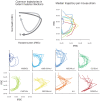

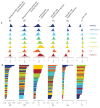

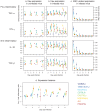
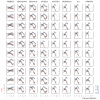

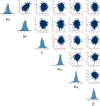

Similar articles
-
Uncovering drivers of dose-dependence and individual variation in malaria infection outcomes.PLoS Comput Biol. 2020 Oct 8;16(10):e1008211. doi: 10.1371/journal.pcbi.1008211. eCollection 2020 Oct. PLoS Comput Biol. 2020. PMID: 33031367 Free PMC article.
-
The dynamics of acute malaria infections. I. Effect of the parasite's red blood cell preference.Proc Biol Sci. 2008 Jun 22;275(1641):1449-58. doi: 10.1098/rspb.2008.0198. Proc Biol Sci. 2008. PMID: 18364317 Free PMC article.
-
Mouse models of blood-stage malaria infections: immune responses and cytokines involved in protection and pathology.Chem Immunol. 2002;80:204-28. doi: 10.1159/000058845. Chem Immunol. 2002. PMID: 12058640 Review. No abstract available.
-
Microbiology. Quantifying malaria dynamics within the host.Science. 2011 Aug 19;333(6045):943-4. doi: 10.1126/science.1210775. Science. 2011. PMID: 21852478 No abstract available.
-
The contribution of Plasmodium chabaudi to our understanding of malaria.Trends Parasitol. 2012 Feb;28(2):73-82. doi: 10.1016/j.pt.2011.10.006. Epub 2011 Nov 17. Trends Parasitol. 2012. PMID: 22100995 Free PMC article. Review.
Cited by
-
Rapid adaptation to a novel pathogen through disease tolerance in a wild songbird.PLoS Pathog. 2023 Jun 9;19(6):e1011408. doi: 10.1371/journal.ppat.1011408. eCollection 2023 Jun. PLoS Pathog. 2023. PMID: 37294834 Free PMC article.
-
Targeting malaria parasites inside mosquitoes: ecoevolutionary consequences.Trends Parasitol. 2022 Dec;38(12):1031-1040. doi: 10.1016/j.pt.2022.09.004. Epub 2022 Oct 5. Trends Parasitol. 2022. PMID: 36209032 Free PMC article. Review.
-
Dual nature of type I interferon responses and feedback regulations by SOCS1 dictate malaria mortality.J Adv Res. 2025 Jul;73:295-310. doi: 10.1016/j.jare.2024.08.027. Epub 2024 Aug 22. J Adv Res. 2025. PMID: 39181199 Free PMC article.
-
Using the Collaborative Cross and Diversity Outbred Mice in Immunology.Curr Protoc. 2022 Sep;2(9):e547. doi: 10.1002/cpz1.547. Curr Protoc. 2022. PMID: 36066328 Free PMC article.
-
The impact of innate immunity on malaria parasite infection dynamics in rodent models.Front Immunol. 2023 Aug 14;14:1171176. doi: 10.3389/fimmu.2023.1171176. eCollection 2023. Front Immunol. 2023. PMID: 37646037 Free PMC article.
References
-
- Bopp SE, Ramachandran V, Henson K, Luzader A, Lindstrom M, Spooner M, Steffy BM, Suzuki O, Janse C, Waters AP, Zhou Y, Wiltshire T, Winzeler EA. Genome wide analysis of inbred mouse lines identifies a locus containing Ppar-gamma as contributing to enhanced malaria survival. PLOS ONE. 2010;5:e10903. doi: 10.1371/journal.pone.0010903. - DOI - PMC - PubMed
Publication types
MeSH terms
Substances
Grants and funding
LinkOut - more resources
Full Text Sources
Medical

